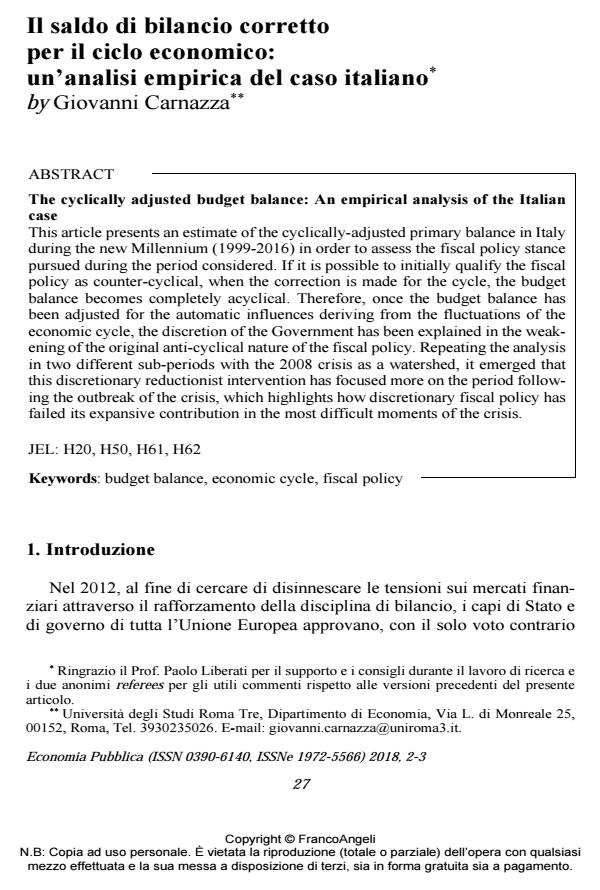Il saldo di bilancio corretto per il ciclo economico: un’analisi empirica del caso italiano
Journal title ECONOMIA PUBBLICA
Author/s Giovanni Carnazza
Publishing Year 2018 Issue 2018/2-3
Language Italian Pages 26 P. 27-52 File size 444 KB
DOI 10.3280/EP2018-002002
DOI is like a bar code for intellectual property: to have more infomation
click here
Below, you can see the article first page
If you want to buy this article in PDF format, you can do it, following the instructions to buy download credits

FrancoAngeli is member of Publishers International Linking Association, Inc (PILA), a not-for-profit association which run the CrossRef service enabling links to and from online scholarly content.
The cyclically adjusted budget balance: An empirical analysis of the Italian case This article presents an estimate of the cyclically-adjusted primary balance in Italy during the new Millennium (1999-2016) in order to assess the fiscal policy stance pursued during the period considered. If it is possible to initially qualify the fiscal policy as counter-cyclical, when the correction is made for the cycle, the budget balance becomes completely acyclical. Therefore, once the budget balance has been adjusted for the automatic influences deriving from the fluctuations of the economic cycle, the discretion of the Government has been explained in the weakening of the original anti-cyclical nature of the fiscal policy. Repeating the analysis in two different sub-periods with the 2008 crisis as a watershed, it emerged that this discretionary reductionist intervention has focused more on the period following the outbreak of the crisis, which highlights how discretionary fiscal policy has failed its expansive contribution in the most difficult moments of the crisis.
Keywords: Budget balance, economic cycle, fiscal policy
Jel codes: H20, H50, H61, H62
Giovanni Carnazza, Il saldo di bilancio corretto per il ciclo economico: un’analisi empirica del caso italiano in "ECONOMIA PUBBLICA " 2-3/2018, pp 27-52, DOI: 10.3280/EP2018-002002